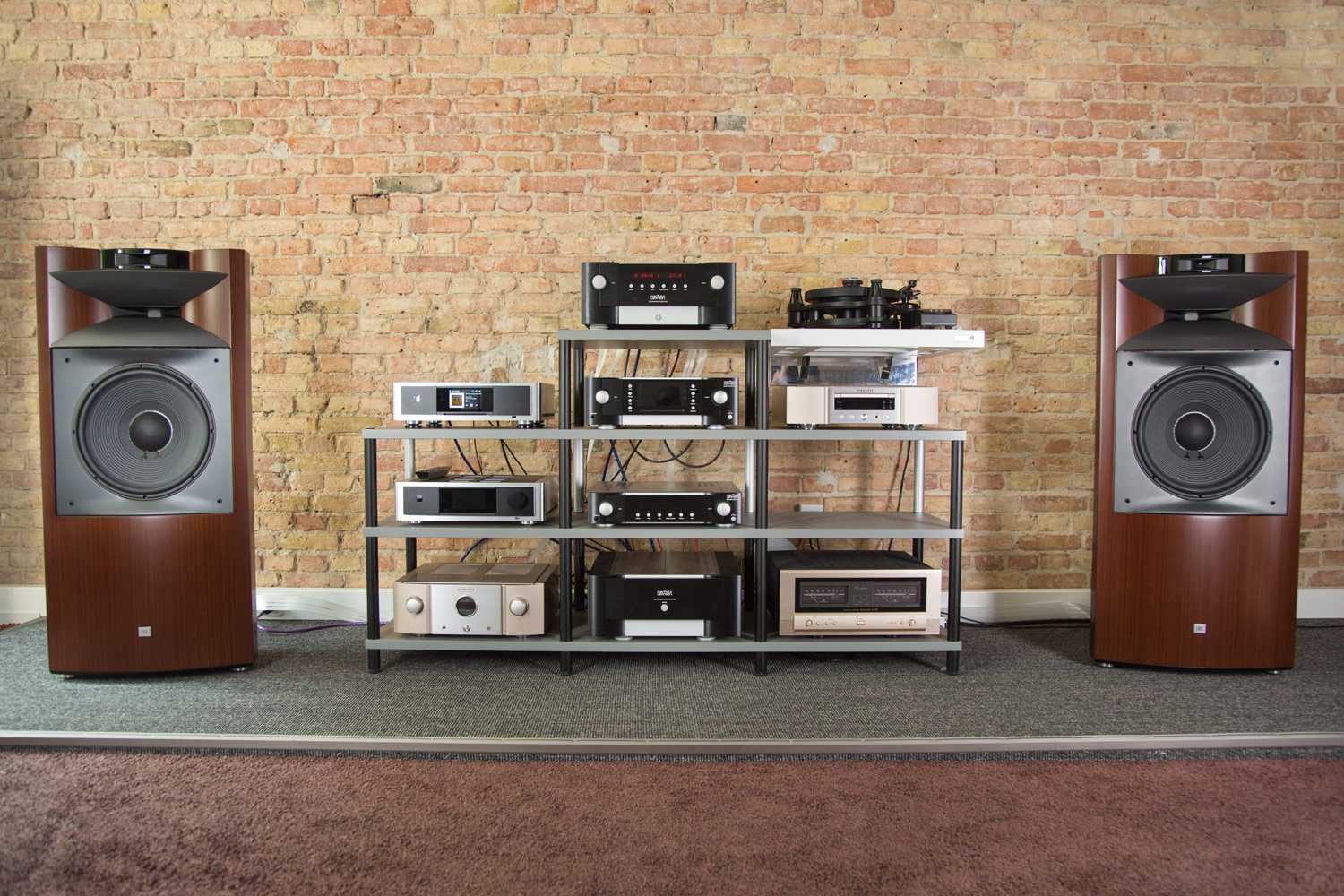
JBL K2 S9900: The Pinnacle of JBL Heritage
Roughly two decades ago, an eagerly anticipated tour of JBL headquarters commenced in downtown Los Angeles. The facility's distinctive architecture immediately set it apart from its surroundings. Upon reflection, one can see how the company's groundbreaking designs from the 1950s and 1960s were intrinsically linked to the mid-century modern movement that defined that era.
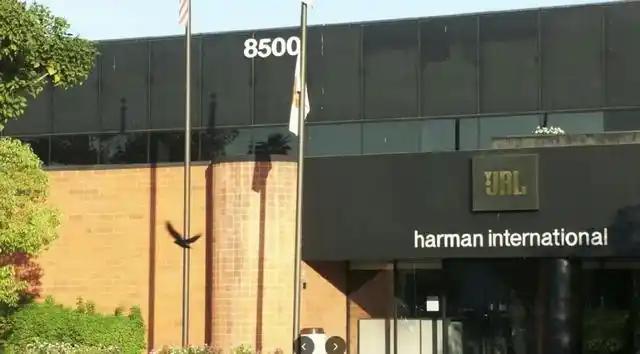
In retrospect, the birth of legendary products like the Paragon, Hartsfield, and Olympus was made possible, in part, by America's unprecedented economic dominance. During this period, the United States reportedly controlled over 40% of global GDP, with some estimates reaching as high as 50%. In this context, the JBL brand stands as a testament to America's golden age. The iconic orange JBL logo, unforgettable to anyone who has ever encountered it, remains a lasting legacy of this remarkable period. The JBL headquarters building itself bears witness to this heritage. Standing at the entrance, face-to-face with the Olympus speaker, I couldn't help but feel my heart race with excitement.
Greg Timbers: Father of the K2 Series
Encountering such masterpieces of audio engineering in person is a rare privilege. For most enthusiasts, JBL's flagship K2 series remains their primary point of reference - a line of speakers that owes its existence to the brilliance of Greg Timbers. During that visit, I had the honor of meeting this legendary designer in person. For those interested in delving deeper into his work, his detailed book comes highly recommended.
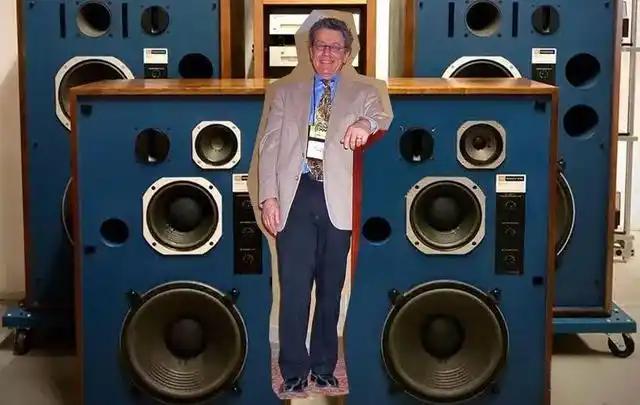
Greg's journey in speaker design began remarkably early - at just 13 years old, he was already crafting his own speakers. A true Californian through and through, he pursued electrical engineering at UCLA. His path led him to JBL on August 1, 1972, a moment that would mark the beginning of an extraordinary career.
For Greg, who was born, raised, and educated in California, joining JBL - a company deeply rooted in the Golden State - seemed almost predestined. JBL found itself fortunate to have secured one of the finest speaker engineers of the past four decades.
The first decade of his career was spent under the mentorship of Ed May, a master of classical JBL design. Greg's natural aptitude for speaker design became evident almost immediately. Within just eight months of joining the company, he was already heading speaker projects, beginning with the Model 4315. The 4300 series that followed garnered significant acclaim in both domestic and professional studio settings, cementing Greg's reputation in the field.
As the 1970s progressed, Greg independently designed several notable models including the 4333, L200, and L300. The L300, in particular, bears direct relevance to the subject at hand - a connection we'll explore in greater detail shortly.
The 1970s saw a significant shift in the audio market, with home audio gaining prominence. JBL responded by focusing on bookshelf and tower speakers. However, Greg's deep respect for JBL's heritage eventually convinced the company to undertake its first major project in years - the launch of the DD55000 Everest, marking a return to the company's grand traditions.
While encountering such iconic masterpieces in person remains a rare privilege, audiophiles worldwide are more familiar with JBL's flagship K2 series - the brainchild of Greg Timbers. During my visit, I had the distinct honor of meeting this legendary designer. His comprehensive book, which I highly recommend to those interested, offers deep insights into his remarkable journey.
Timbers' passion for speaker design emerged remarkably early - at just 13 years old, he was already crafting his own speakers. A quintessential Californian, he pursued electrical engineering at UCLA before joining JBL on August 1, 1972 - a pivotal moment that would shape the future of high-end audio.
For Timbers, born, raised, and educated in California, joining JBL - a company deeply rooted in the Golden State - seemed written in the stars. This fortuitous partnership would prove invaluable for JBL, as Timbers would become one of the finest speaker engineers of the past four decades.
His first decade at JBL was spent under the mentorship of Ed May, a master of classical JBL design. Timbers demonstrated exceptional aptitude from the start, leading his first speaker project - the Model 4315 - merely eight months after joining the company. The subsequent 4300 series garnered widespread acclaim in both domestic and professional studio environments, establishing Timbers as a force in the industry.
The 1970s saw Timbers independently design several landmark models, including the 4333, L200, and L300 - with the L300 bearing particular significance to our present discussion, a connection we'll explore in detail later.
During this period, as the home audio market flourished, JBL strategically focused on bookshelf and tower speakers. However, Timbers' profound respect for JBL's heritage eventually convinced the company to undertake its first major project in years - the revolutionary DD55000 Everest. This marked a triumphant return to JBL's grand traditions of pushing the boundaries of speaker design.
A brief retrospective of JBL's flagship speakers - known internally as "Project Speakers" - reveals a storied lineage. The Hartsfield claimed the distinction of being Unit One, followed by the legendary Paragon. However, this prestigious bloodline lay dormant for nearly four decades until 1985, when the DD55000 Everest emerged as the spiritual successor to the DD44000 Paragon.
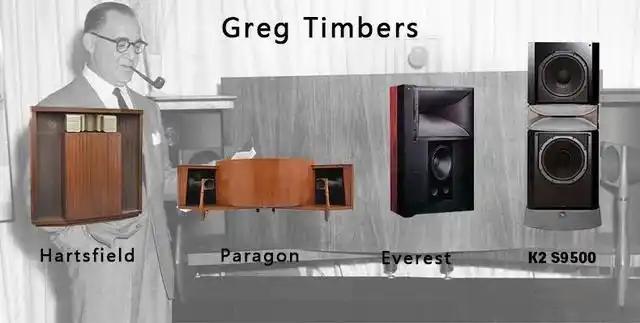
The 1980s presented significant challenges for JBL. The company underwent a tumultuous three-year period under Beatrice Foods' ownership. Simultaneously, the outbreak of civil war in Congo disrupted cobalt supplies, severely impacting the production of Alnico magnets.
Yet, as often happens, this crisis sparked innovation. Tasked with replacing driver magnets, Greg Timbers ingeniously redesigned numerous models, successfully transitioning from Alnico to ferrite magnets while maintaining JBL's renowned sound quality.
By the mid-1980s, as the original masters who had shaped JBL's legendary status retired, Timbers had ascended to a position of technical leadership. The launch of the DD55000 marked this transition, serving as both a technological advancement and a respectful homage to the company's pioneering heritage.
Just four years later, JBL unveiled an even more groundbreaking project - the K2 S9500. This launch powerfully reaffirmed JBL's position at the forefront of speaker engineering, effectively re-establishing the classic JBL lineup in the ultra-high-end market. However, as our focus lies with the subsequent S9800 and the current S9900 models, we'll reserve the detailed discussion of the S9500 for another time.
While encountering such iconic masterpieces in person remains a rare privilege, audiophiles worldwide are more familiar with JBL's flagship K2 series - the brainchild of Greg Timbers. During my visit, I had the distinct honor of meeting this legendary designer. His comprehensive book, which I highly recommend to those interested, offers deep insights into his remarkable journey.
Timbers' passion for speaker design emerged remarkably early - at just 13 years old, he was already crafting his own speakers. A quintessential Californian, he pursued electrical engineering at UCLA before joining JBL on August 1, 1972 - a pivotal moment that would shape the future of high-end audio.
For Timbers, born, raised, and educated in California, joining JBL - a company deeply rooted in the Golden State - seemed written in the stars. This fortuitous partnership would prove invaluable for JBL, as Timbers would become one of the finest speaker engineers of the past four decades.
His first decade at JBL was spent under the mentorship of Ed May, a master of classical JBL design. Timbers demonstrated exceptional aptitude from the start, leading his first speaker project - the Model 4315 - merely eight months after joining the company. The subsequent 4300 series garnered widespread acclaim in both domestic and professional studio environments, establishing Timbers as a force in the industry.
The 1970s saw Timbers independently design several landmark models, including the 4333, L200, and L300 - with the L300 bearing particular significance to our present discussion, a connection we'll explore in detail later.
During this period, as the home audio market flourished, JBL strategically focused on bookshelf and tower speakers. However, Timbers' profound respect for JBL's heritage eventually convinced the company to undertake its first major project in years - the revolutionary DD55000 Everest. This marked a triumphant return to JBL's grand traditions of pushing the boundaries of speaker design.
When Jim Run first introduced JBL, his vision centered on two-way loudspeaker designs. This was a natural progression at the time, given the outstanding success of models like the A5 and A7 that utilized Alnico magnets. Since his passing, JBL has faithfully preserved this legacy. The S9500's design represents a modern reinterpretation of this foundational DNA.
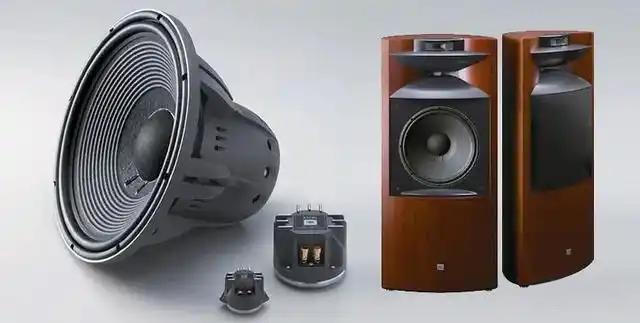
The S9800, launched in 2001 after four years of development, emerged as the most compact engineering speaker in the company's history. It earned its place as the fifth-generation speaker, marking a significant turning point as JBL incorporated its latest technological innovations.
In a bold move, JBL equipped the speaker with a 15-inch woofer, once again utilizing Alnico magnets. The engineering team, led by Greg, recognized that damping would become crucial as amplitude increased. Their solution was remarkable: implementing a dual damping structure that maintained precise control even at one-inch amplitude excursions. This technological breakthrough proved that 15-inch woofer systems could thrive in the modern era.
The speaker showcased numerous technological advancements, including an innovative cooling vent system in the magnet and pole piece for effective heat dissipation, along with a radial horn design. Perhaps most notably, it featured the introduction of the berry membrane.
While the S9800 and S9900 share similar visual aesthetics and both employ three-way configurations, there's a key distinction: the super-tweeter is mounted at the top. Most vocal frequencies are handled by the two-way section. At its launch, the S9800's tweeter and super-tweeter configuration was celebrated as technology far ahead of its time.
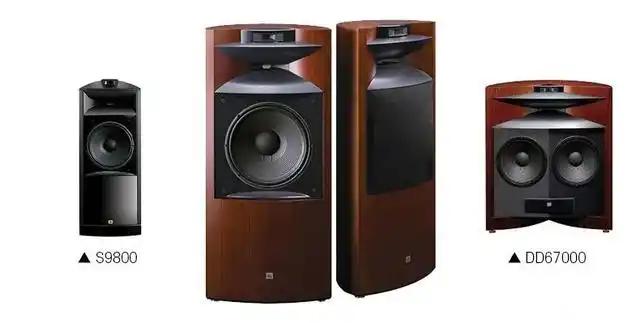
Having encountered the S9900 several times before, I never had the chance to properly audition or review it. Although this model has been on the market for several years, I'm genuinely excited about finally getting my hands on it.
From a design perspective, the S9900 seems to follow two distinct lineages. The first is the K2 line, naturally inheriting the core philosophy of the S9800. The second traces back to the Everest series, beginning with the DD66000, which evolved from the DD55000 and later developed into the DD67000. In this sense, the product appears to embody elements from both heritage lines.
However, the S9900's substance tells a different story. While it naturally incorporates core technologies from the 4365 model - launched in 2011 to commemorate JBL's 65th anniversary - it establishes its own unique identity. The implementation of SonoGlass, pure pulp cones, and EPDM surrounds, among other features, makes for a fascinating technical package.
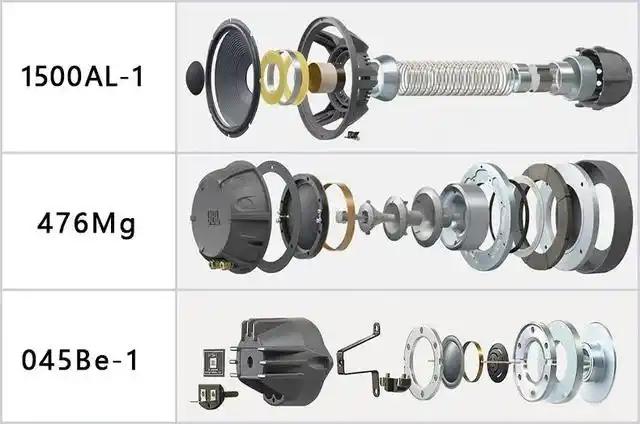
The K2 S9900 features a three-way configuration consisting of a 15-inch woofer, a horn-loaded compression driver, and an ultra-high frequency driver. What makes this system unique is that the horn driver also contributes significantly to midrange reproduction. While the specified frequency response ranges from 33Hz to 50kHz, actual measurements suggest it can reach down to 23Hz. I should note that one article incorrectly stated 48Hz as the lower limit - a rather implausible figure for a 15-inch woofer. For comparison, the S9800 model has a low-frequency limit of 45Hz. While I had some reservations about this aspect in previous models, the improvements here have certainly piqued my interest.
The midrange horn handles frequencies from 900Hz to 15kHz - a crucial range that truly defines the speaker's soul. According to Greg, the success of large two-way horn systems like the S9500 or M9500 largely depends on how well the horn covers the midrange frequencies. It's evident that considerable thought went into this aspect of the design.
To achieve proper midrange coverage, a new diaphragm was essential, requiring substantial space. The solution came in the form of a 4-inch magnesium alloy diaphragm paired with a compression driver. This combination represents one of the K2's greatest strengths. It's worth noting that this technology isn't entirely new - the DD66000 already employed a 4-inch compression driver diaphragm. However, this improved version, designated as 476Mg, builds upon that foundation. For context, the S9800 used a smaller 3-inch diaphragm.
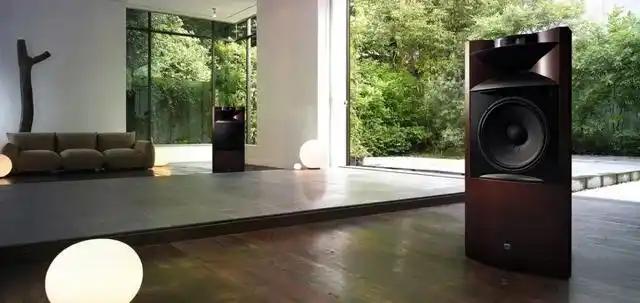
Traditionally, JBL has favored paper cones for their woofers - and for good reason. While some might consider this a conservative choice, it's important to understand that we're not talking about ordinary paper here. The cone material is actually a sophisticated composite, with paper as its base, that has been refined through years of research and development. This time-tested approach reflects JBL's commitment to achieving optimal performance through careful material selection rather than simply chasing trendy alternatives.
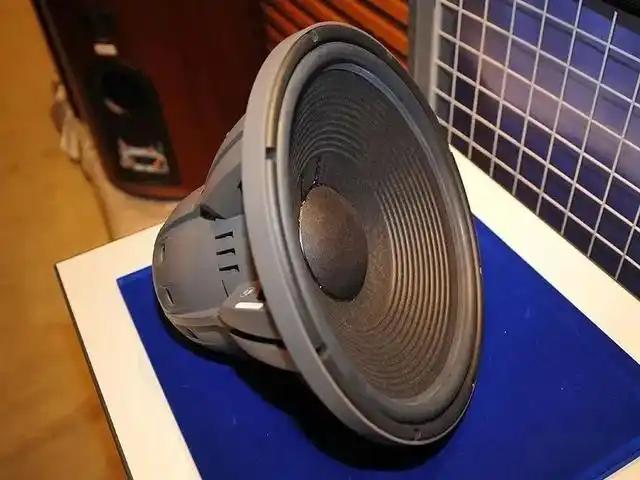
For reference, the K2 S9900 employs the 1500AL-1 woofer, the successor to the legendary 1500AL which was renowned for its Alnico magnet. This choice exudes confidence in JBL's engineering heritage. Alnico (aluminum-nickel-cobalt) magnets are celebrated for their ability to reproduce deep, rich bass frequencies. However, they historically faced a challenge: their magnetic properties could weaken under high current loads. This, combined with the emergence of high-power amplifiers in the 1970s and supply disruptions due to the Congo conflict, led to their natural disappearance from the industry.
Yet JBL, fully aware of Alnico's superior qualities, took the initiative to refine and reintroduce this technology. Their persistence in reviving and improving upon this classic material, rather than simply adopting more convenient alternatives, deserves significant praise. It's a testament to their unwavering commitment to acoustic excellence.
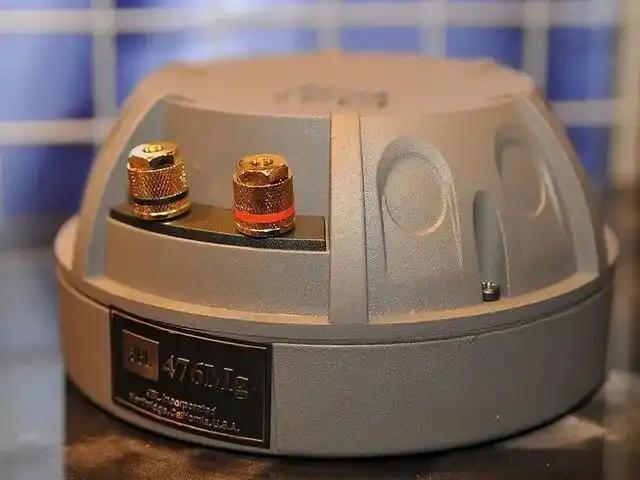
The 476Mg compression driver shares significant DNA with the 476Be beryllium diaphragm driver found in the DD66000. This groundbreaking design marks JBL's first implementation of a newly developed 4-inch magnesium alloy foil diaphragm. What sets it apart is its exceptional ability to extend beyond 15kHz - a remarkable achievement for a compression driver of this size.
A unique feature worth highlighting is its proprietary diamond-shaped suspension system. This innovative design element isn't just for show - it significantly enhances fidelity without introducing any compromises. The combination of the lightweight magnesium alloy diaphragm and the diamond suspension represents JBL's commitment to pushing the boundaries of high-frequency reproduction while maintaining absolute sonic purity.
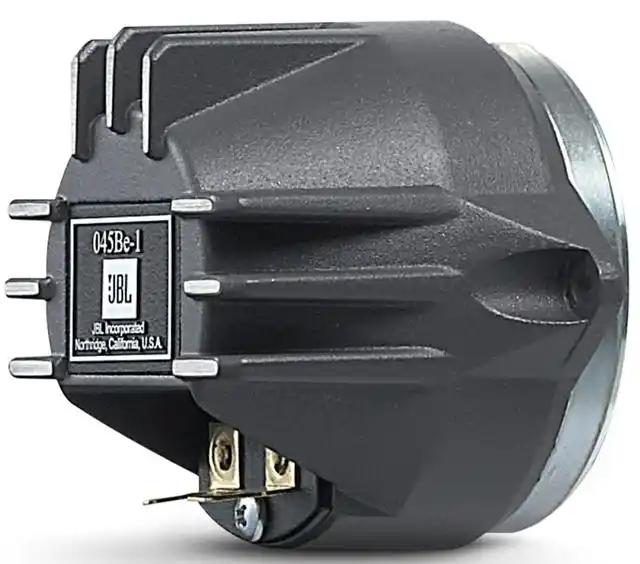
The Edge features EPDM (Ethylene Propylene Diene Monomer) technology, incorporating a newly developed lightweight rubber foam surround that offers exceptional durability and damping characteristics. The surround's profile wasn't left to chance - it was meticulously developed through computer modeling to ensure precise driver movement.
Moving up the frequency range, the ultra-high frequency driver handles frequencies from 15kHz to 50kHz. Here, JBL employs the 045Be-1, their latest iteration of a well-established driver featuring a beryllium diaphragm.
Beryllium, a high-tech material commonly used in aerospace applications, holds the distinction of being the lightest of all metals. Its sound transmission velocity of 12 kilometers per second is nothing short of remarkable. However, crafting diaphragms from this material presents significant manufacturing challenges. JBL's engineering prowess shines through in their ability to harness beryllium's exceptional properties effectively. This technological achievement demonstrates their commitment to pushing the boundaries of high-frequency reproduction.
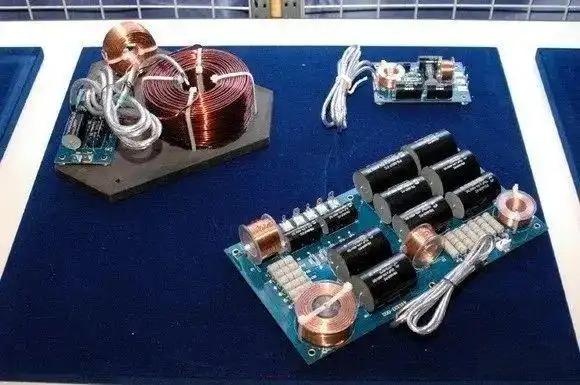
The K2 S9900 employs a three-way design, with each driver receiving its dedicated input. The crossover network's configuration clearly demonstrates how these three distinct elements work in concert rather than as a single unit. This level of sophistication in signal routing is exactly what one would expect from a speaker of this caliber, and it's a feature that true audiophiles will appreciate. Naturally, only premium components have been selected for the crossover network.
As for the cabinet construction, it features a robust 25mm thickness achieved by firmly bonding two MDF layers together. A notable design element is the large rear-firing port, which necessitates careful placement - you'll want to maintain adequate distance from the back wall for optimal performance. This isn't just a casual recommendation; it's essential for allowing the port to breathe properly and achieve the intended bass response.
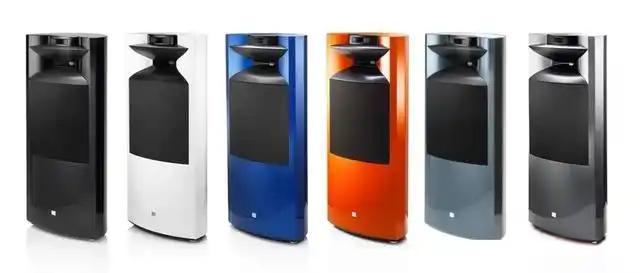
These speakers are substantial pieces of equipment, weighing in at approximately 83 kilograms each. Needless to say, this isn't a one-person job when it comes to installation. As you'd expect from a horn-loaded design, sensitivity is impressively high at 93dB, with an 8-ohm impedance. According to the manufacturer, these speakers can be driven effectively by tube amplifiers as modest as 50 watts, while also being capable of handling up to 400 watts for those who prefer more powerful amplification. This flexibility in amplification requirements means listeners can tailor their system to match their personal preferences and listening style.
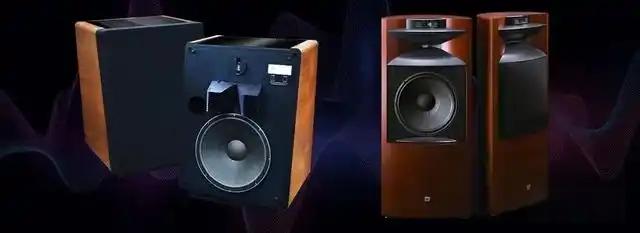
Recently, JBL has been experiencing a renaissance, with models like the L100 gaining renewed attention, the 4312 series evolving into the G variant, and surprisingly, even their amplifiers generating buzz. This renewed appreciation for JBL's heritage has been met with considerable enthusiasm. I've frequently expressed my desire to see this momentum extend to reviving the L300.
The L300 was truly a unique speaker in JBL's lineup. Its distinctive design featured an upward-tilted baffle, as if sliced at an angle - a significant departure from the conventional rectangular cabinets typical of the L series. Viewed from the side, the cabinet gracefully rises at a gentle angle from bottom to top.
What's remarkable is how this unconventional design translated into exceptional soundstage performance. I recall a memorable experience in the mid-1990s listening to Sonny Rollins' "St. Thomas" through these speakers. The soundstaging capabilities left me astounded. Traditionally, horn-loaded speakers, while excellent at delivering energy and power, often struggled with stereo imaging.
But the L300 was different, thanks to Greg Timbers' engineering prowess. His later creation, the S9800, also demonstrated excellent temporal alignment and, when properly positioned, delivered outstanding soundstage performance. The K2 S9900 continues this legacy. Considering its ability to combine the powerful presence typical of horn designs with exceptional imaging and stage reproduction, this speaker represents something truly special and desirable. This perfect balance of attributes is precisely what makes it so captivating to me.
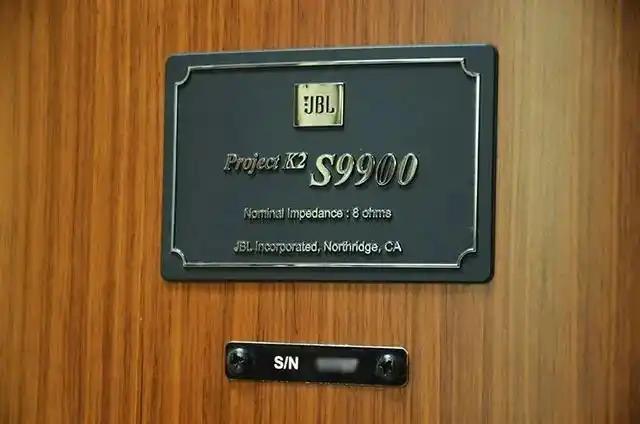
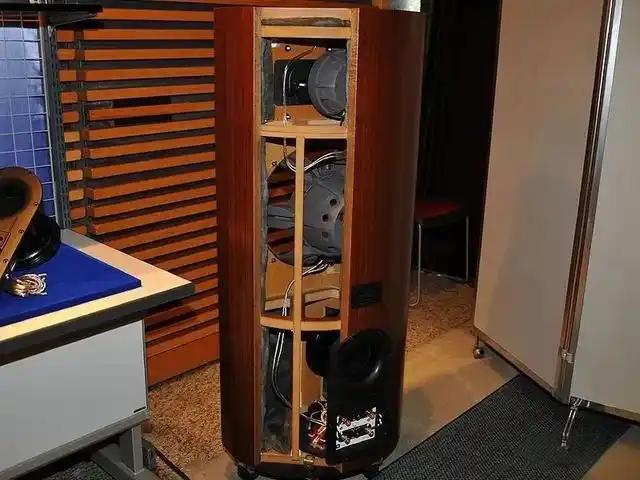
For this listening session, we utilized an impressive array of Mark Levinson's latest equipment. The system was anchored by the No.519 Network Player, No.526 Preamplifier, and the No.5302 Monoblock Power Amplifiers. This high-end combination served as the perfect foundation for evaluating the K2 S9900's capabilities.
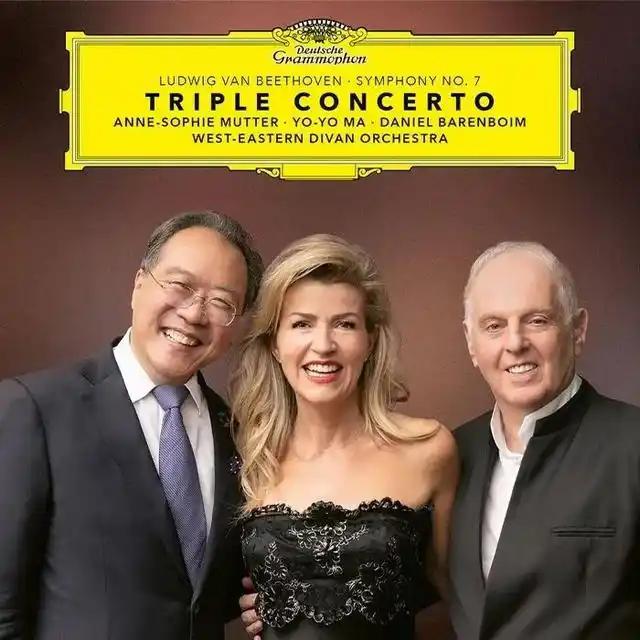
Our first listening selection was the first movement of Beethoven's Triple Concerto, performed by the stellar combination of Anne-Sophie Mutter, Yo-Yo Ma, and Daniel Barenboim. The K2 S9900's performance here was revelatory. The spatial positioning of all three solo instruments was precisely defined, while the orchestra spread across a remarkably wide soundstage. The presentation was both agile and perfectly balanced, without a trace of the metallic coloration that sometimes plagues horn-loaded designs.
What particularly impressed me was how beautifully the speakers showcased the refined qualities of the new Mark Levinson electronics, resulting in a sound that was absolutely luxurious in its presentation. This level of sophistication and refinement came as a genuine surprise - it represents a significant departure from the traditional JBL house sound I've experienced in previous models. The system delivered a level of musical sophistication and tonal richness that sets a new benchmark for the brand.
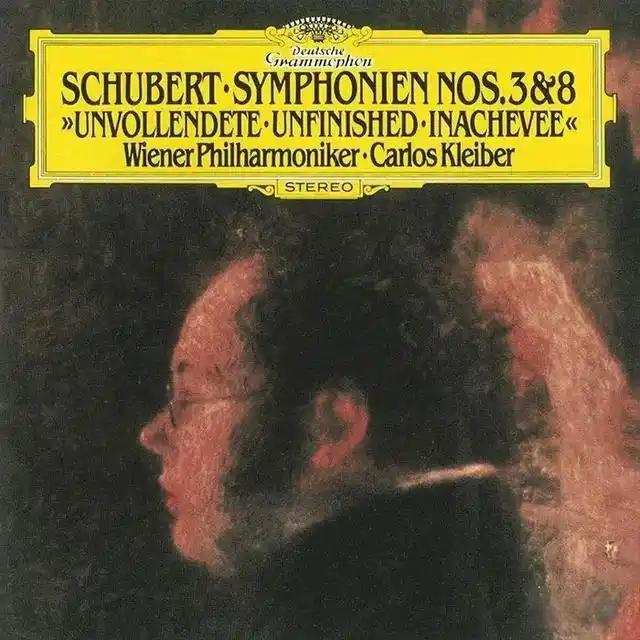
Next, we turned to Schubert's "Unfinished Symphony" under Carlos Kleiber's direction. The first movement emerged like a massive ship materializing from distant, dim lights. The K2 S9900 captured the music's ebb and flow magnificently - much like a long sea voyage, with moments of turbulent waves interspersed with periods of serene calm. This metaphorical journey was rendered with exceptional clarity and conviction.
The speakers excelled in revealing both the textural details of individual instruments and their precise spatial positioning within the soundstage. During the movement's dramatic climaxes, the system demonstrated its ability to handle large-scale orchestral forces with the coherence of a single, massive instrument. Most importantly, the tonal character was utterly captivating - there was a natural warmth and richness that brought Kleiber's interpretation to life. The K2 S9900's ability to maintain clarity and composure while conveying the full emotional impact of this masterpiece was truly remarkable.
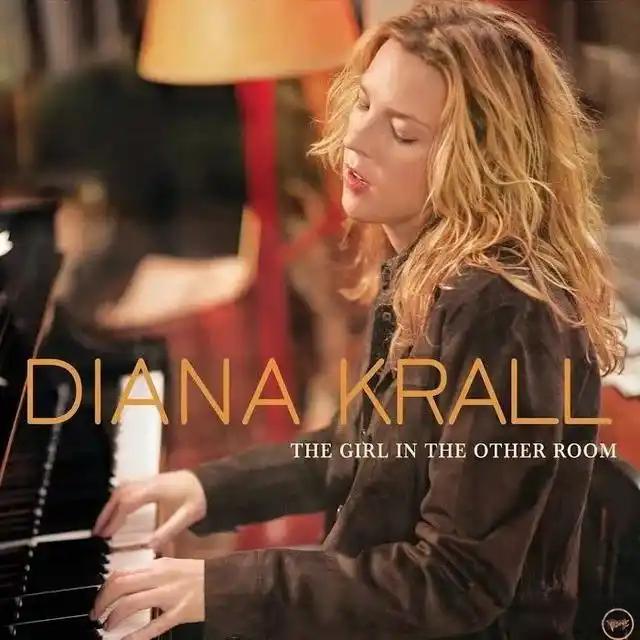
Diana Krall's "Temptation" showcased the K2 S9900's jazz heritage - a domain where JBL has always excelled. The speakers delivered a rich, lively bass foundation with powerful dynamics that perfectly underpinned the performance. The interplay between guitar and piano was rendered with exquisite detail and natural timbre.
But perhaps most impressive was the treatment of Krall's vocals. The presentation was never exaggerated, yet captured all the subtle nuances of her voice with seductive authenticity. The piano solo in the middle passage was stunningly realistic, with each note carrying both weight and delicacy. The overall presentation was luxurious, demonstrating how the K2 S9900 can combine JBL's traditional strengths in dynamics and impact with a newfound level of sophistication and refinement. This is jazz reproduction at its finest - powerful when needed, yet capable of conveying the most delicate musical shadings.
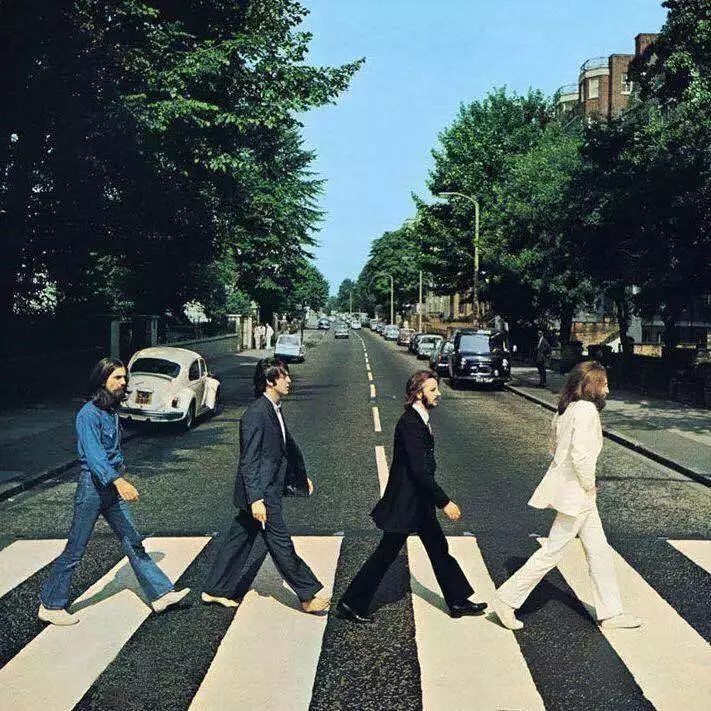
The soundstage was beautifully organized, with John's lead vocals and Paul's backing harmonies presented with vibrant energy and clear separation. The organ and guitar parts that emerge mid-song were conveyed with remarkable clarity and texture. What's particularly impressive is how the K2 S9900 maintained control while delivering all this power and detail.
One can imagine that with different system matching, these speakers could be pushed in an even more aggressive, visceral direction - and they'd likely excel in that context too. This versatility is part of their charm; they're equally capable of refined sophistication or raw, unbridled rock 'n' roll energy, depending on how you choose to drive them.
This review session revealed aspects I hadn't noticed in previous encounters, and I realize now that during its initial release, some of the S9900's true value wasn't properly communicated to JBL enthusiasts. This evaluation has provided a valuable opportunity to properly convey the genuine worth of these remarkable speakers.
It's worth noting that while many manufacturers are currently pursuing superior soundstaging capabilities, the S9900's exceptional performance in this regard deserves special attention. Its ability to combine JBL's traditional strengths with sophisticated imaging capabilities sets a new benchmark in high-end speaker design. This achievement should serve as an eye-opener for those who might have overlooked JBL in the ultra-high-end speaker category.
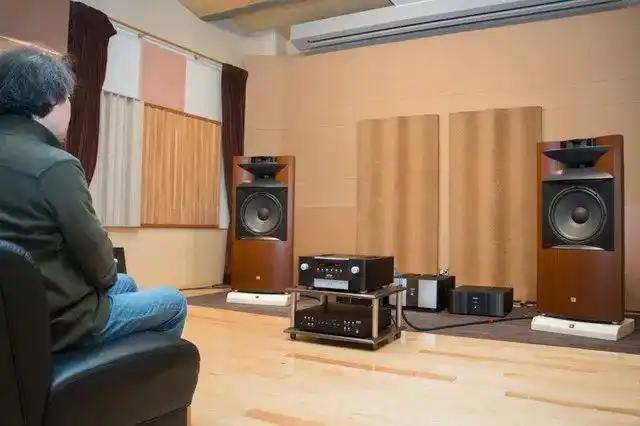
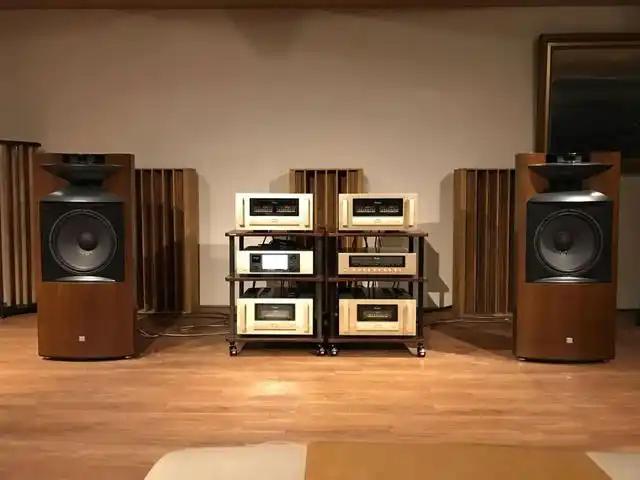
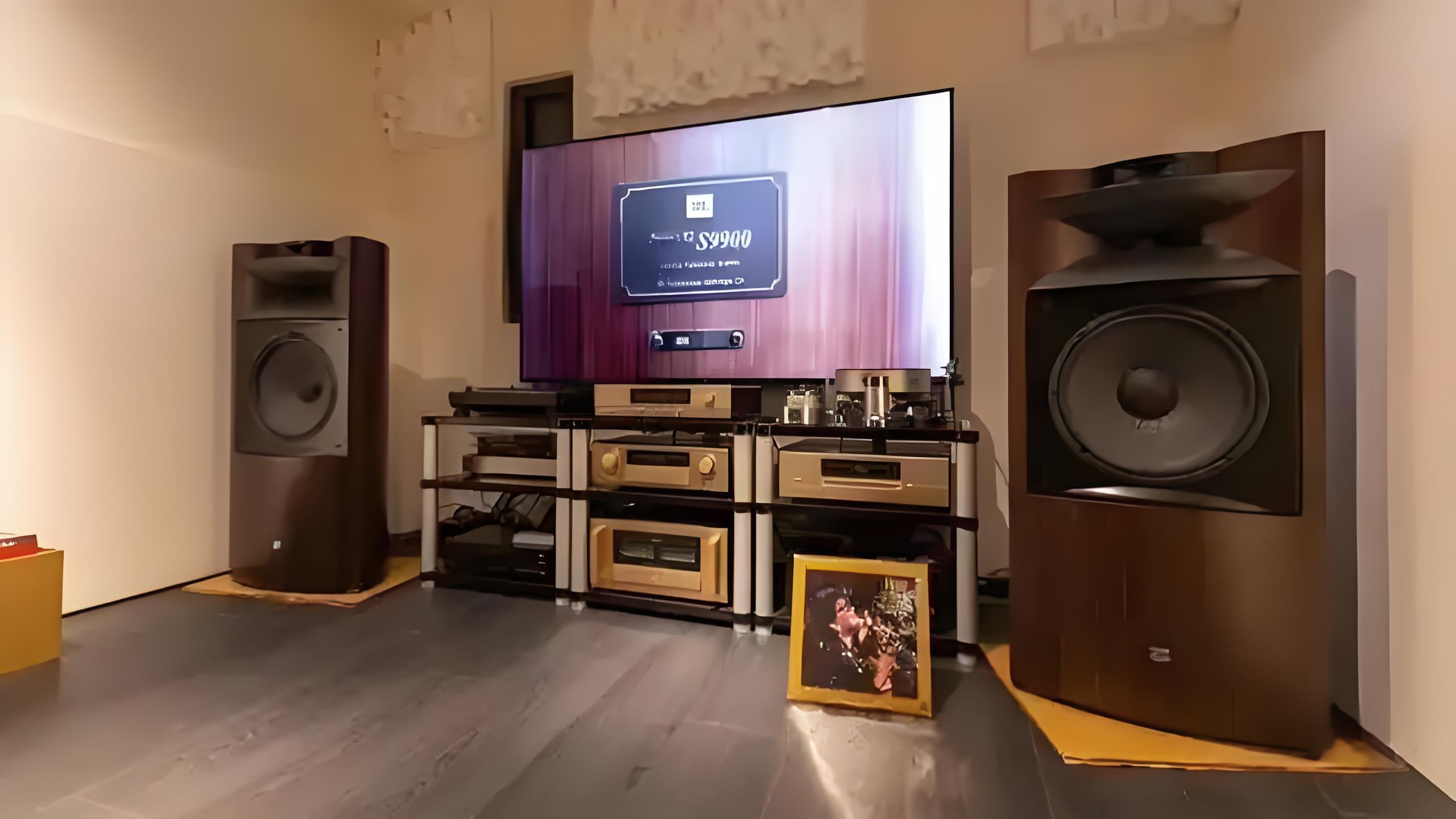
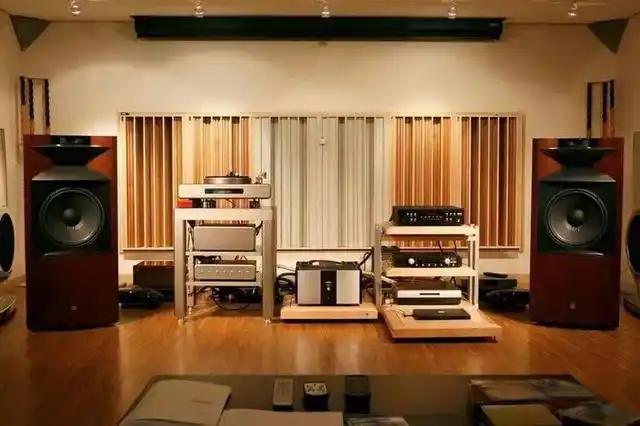



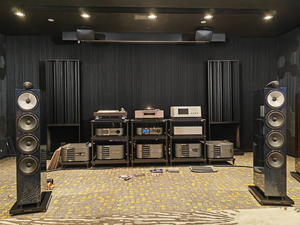
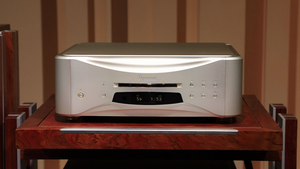
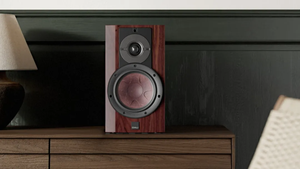
Comments